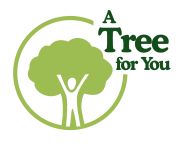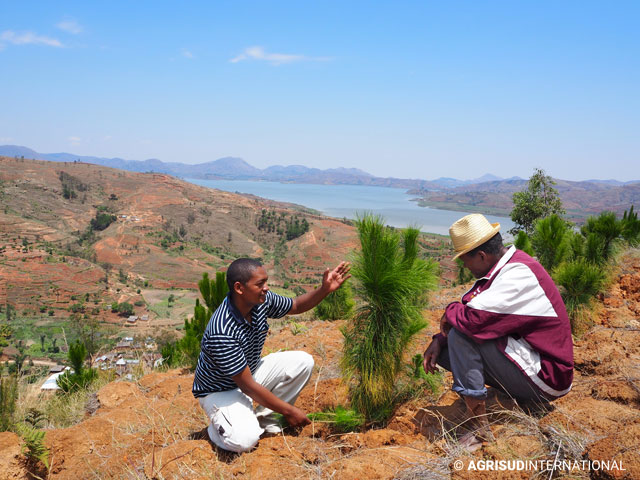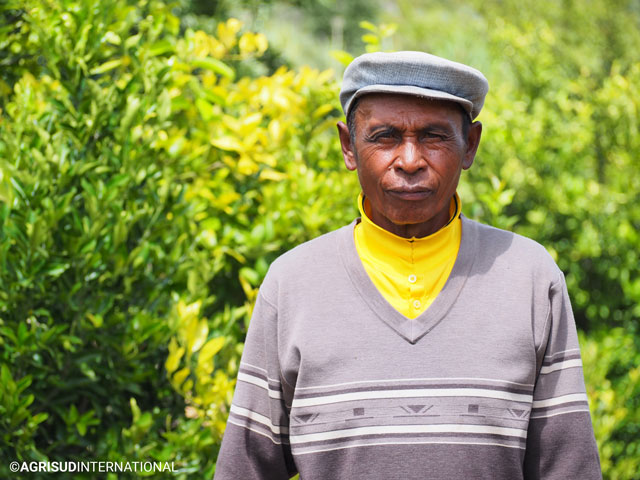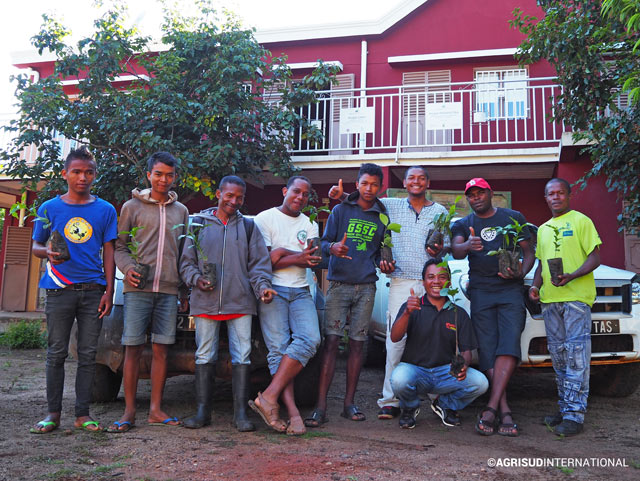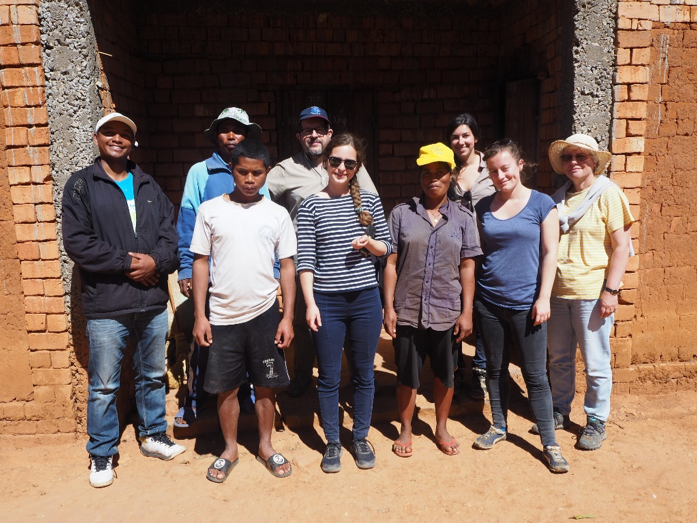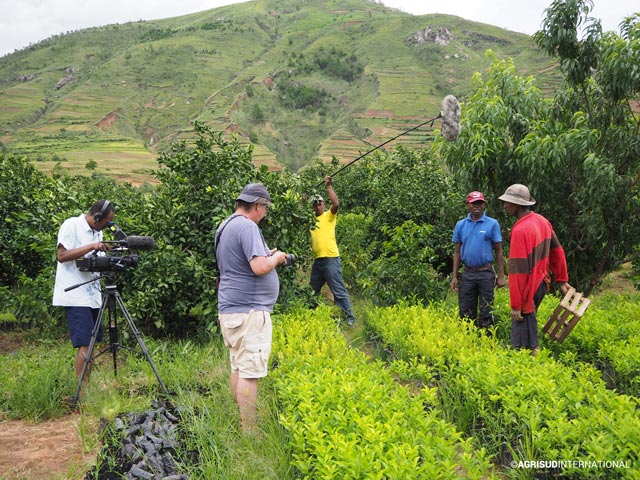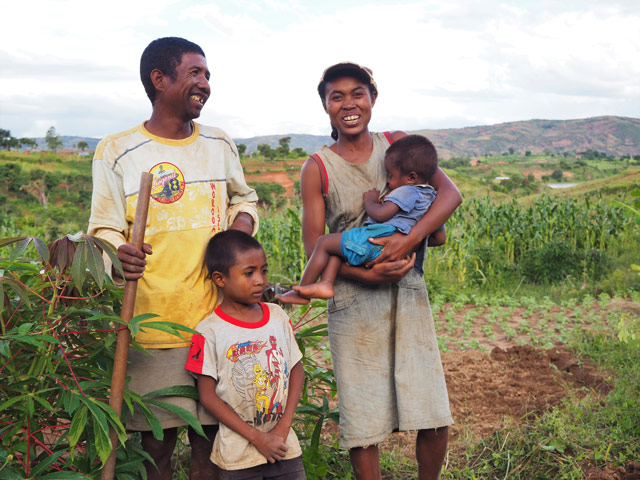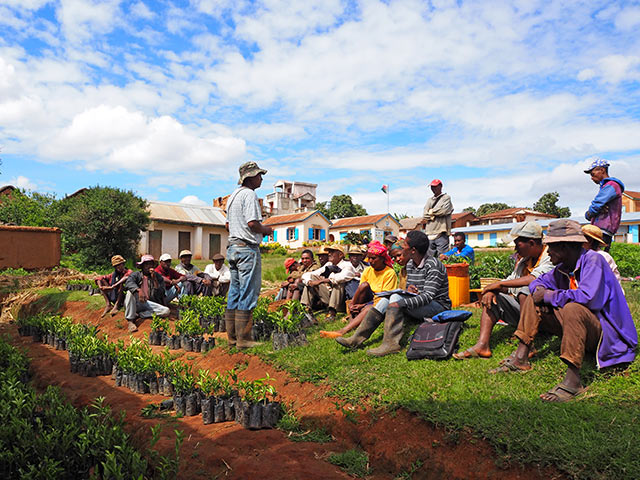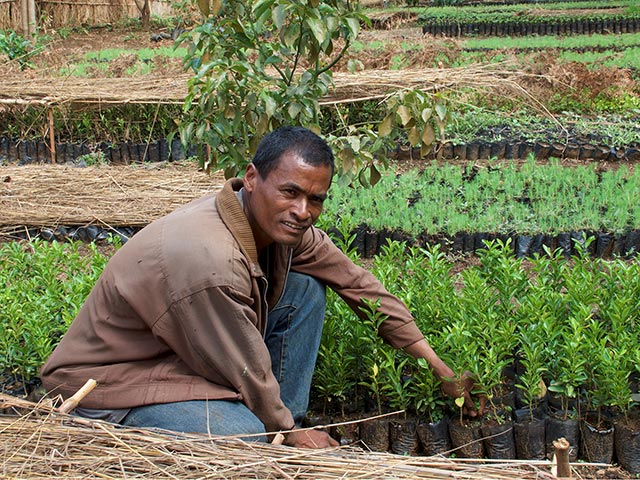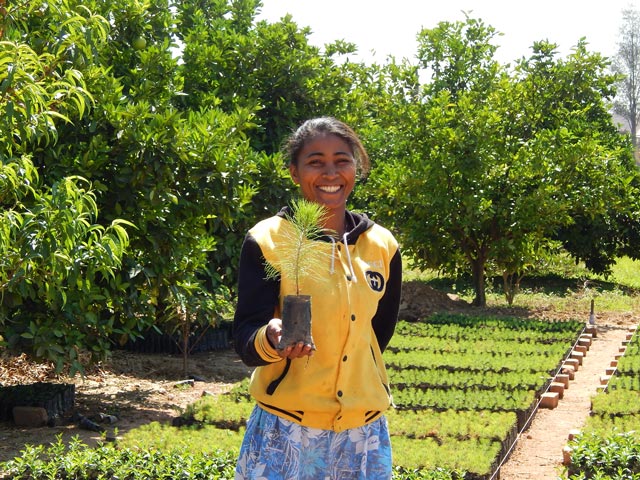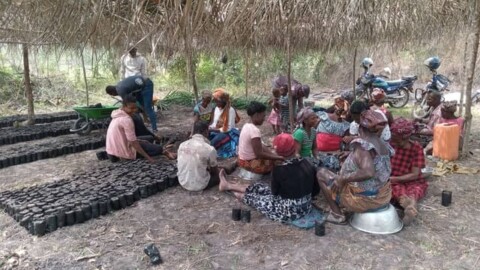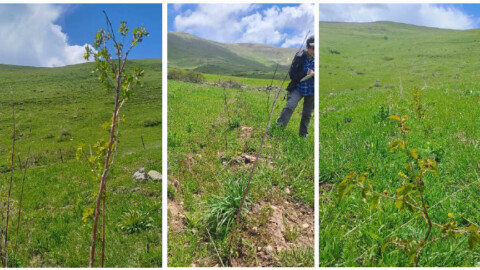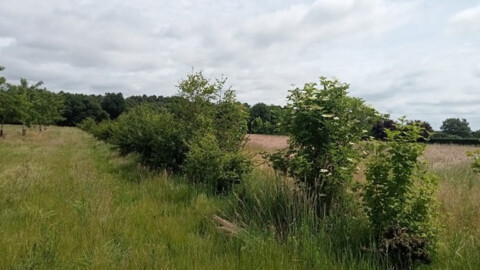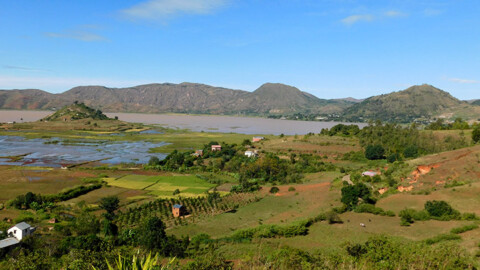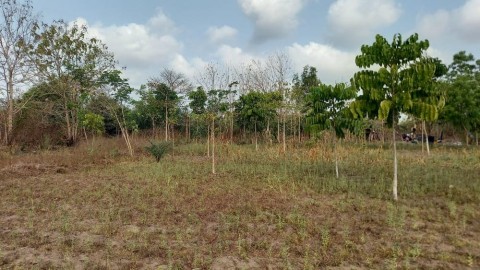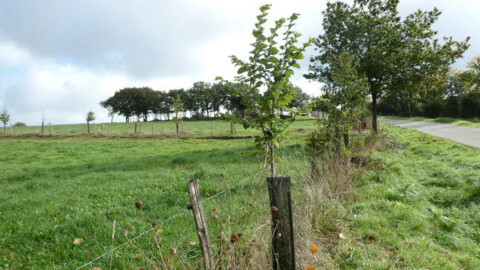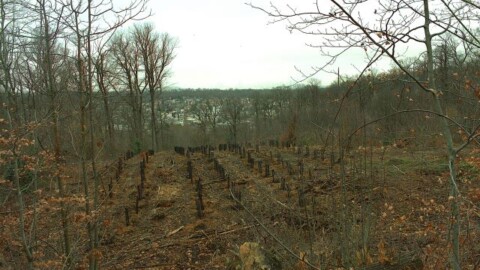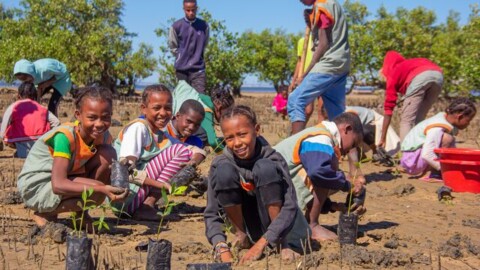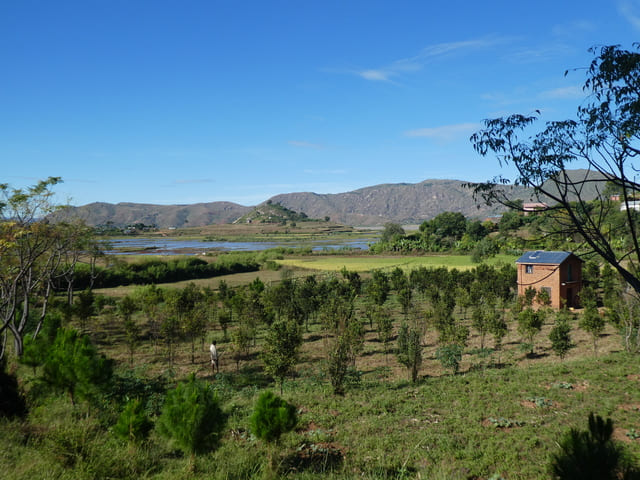
Lake Itasy, Madagascar, May 2023
Project objectives – a reminder
The Mahavotra project is helping develop the sensitive Lake Itasy region and support its 700 farming families. By planting trees, it is helping them shift towards agro-ecology and the introduction of forestry and agro-forestry systems.
The aim is to plant 240,000 trees, of which 108,000 are expected to achieve stabilised management situation (45% survival rate measured after three years).
Overview of the various stages of the project
In July 2018, the sites and potential beneficiary producers were selected. The local association Amadese, an implementing partner of the Mahavotra project, was charged with raising awareness among producers in order to pinpoint sites and quantify the need for young seedlings by species.
In August 2018, training began for beneficiary producers in forestry and agroforestry management techniques. These training sessions, provided by Amadese’s technical team, were carried out in the intervention hamlets, spread over seven Communes around Lake Itasy, where the beneficiaries live. The producers made the planting holes directly after the training sessions.
After identifying and quantifying the species to be planted, in September 2018 the local teams launched the production of young plants at 12 local nurseries. The technical team at Agrisud International helped the nurseries produced over 270,000 seedlings, of which 213,000 forestry and 58,000 agroforestry seedlings (fruit trees).
The seedlings were then distributed between December 2018 and March 2019, during which time the beneficiaries planted the trees on their plots.
Seven communes in the Lake Itasy watershed benefited from these seedlings – namely the communes of Mandiavato, Antoby Est, Manazary, Antanetibe, Ampefy, Ampary, and Soavinandriana.
Between July and September 2019, local teams and growers assessed recovery rates. Following feedback from the beneficiary growers and monitoring by the local team, a replanting campaign was organised to reach the target number of living plants in a stable situation.
In December 2019, growers in the Communes of Mandiavato, Antoby Est, Manazary, and Antanetibe were targeted for this replanting due to the geographical location of the sites – best suited to the planting issues at stake, namely: tackling degradation of fragile land and limiting erosion phenomena to preserve the ‘Itasy Lake’ ecosystem (lakes, associated rice fields, wetlands, etc.).
All in all, over 330,000 seedlings were distributed between 2018 and 2020, of which more than 40,000 agroforestry and 290,000 forestry seedlings. The total number of beneficiaries is upwards of 2,840 families spread over the seven Communes.
Further monitoring visits were carried out by the technical teams in 2021 and 2022. These follow-up visits include:
- advice on how to manage the plantations properly, i.e. introducing methods to limit the risk of bush fires (firebreaks, association with food crops, etc) and the consequences for the trees in the event of a fire (pruning older trees, etc);
- best practice training to limit the impact of seasonal droughts, i.e. mulching, installing watering troughs (for fruit plants), etc. A total of 2,502 farmers benefitted from technical training in tree planting;
- training in techniques to ensure proper development of seedlings (organic fertilisation, pruning, etc).
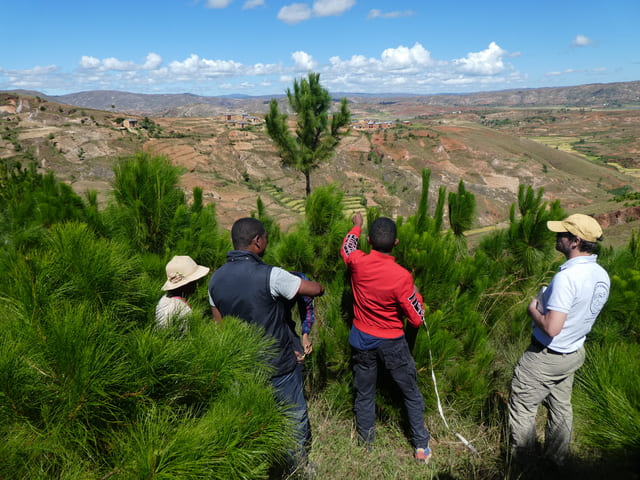
The objectives of the project have been achieved, the beneficiaries are delighted!
At the end of 2022, i.e. four years after the first planting operation, the technical teams did a final monitoring of the tree survival rate. The study revealed an overall survival rate of 56% for both species. This exceeds the objectives set for the project, since the survival rate initially expected was 45%.
For agroforestry species, the main causes of mortality of young trees since planting up to monitoring in the fourth year of management are :
- physiological stress (54%), especially water stress in the dry season (linked to difficulties in applying watering trough techniques, mulching, organic fertilisation, and sometimes to a lack of irrigation), and parasitic pressure (mainly insects);
- vandalism (37%) or theft of young trees;
- other undefined causes (9%), i.e. animals (mainly zebus and goats) wandering around, breaking or eating the young trees, and ‘dieback’ (a disease that causes the plant to dry out from the top downwards, and which still poorly understood by the technical team and growers).
For forest species, the main causes of mortality of young trees since planting up to monitoring in the fourth year of management are:
- dieback (53%);
- pest attacks (17%): soil and foliar insects that cause a reduction in photosynthesis by attacking the leaves and eventually killing the plant, as in the case of sooty mould caused by mealybugs, for example;
- other undefined causes (11%). In these cases, the producer is no longer able to identify the cause of the death of his/her young trees, and at the time of his/her visit, the technician no longer has the means to diagnose the problem;
- vandalism (8%);
- roaming zebus (6%). Often the areas planted with forest species are marginal and unsuited to food crops, so some producers use them as grazing for their animals;
- bush fires (5%), a phenomenon that is growing year on year, facilitated by the flammability of grasslands dried out by lack of humidity and rising temperatures.
Based on these results, the final number of plants living in a stable situation after four years of planting is 185,155, of which 22,484 agroforestry and 162,671 forestry trees, details of which are given below.
Fruit species:
- 493 avocado
- 7,796 coffee
- 80 Meyer lemon
- 2,738 lychee
- 7,483 mandarin
- 562 mango
- 151 orange
- 2,984 Washington orange
- 37 papaya
- 30 peach
- 130 pomegranate
Forest species:
- 6,143 acacias
- 1,655 Eucalyptus Citriodora
- 13,214 Eucalyptus Robusta
- 19 false neem
- 358 jacaranda
- 10 mantalys
- 74 Rosewood
- 141,130 Pinus
- 68 Tectona
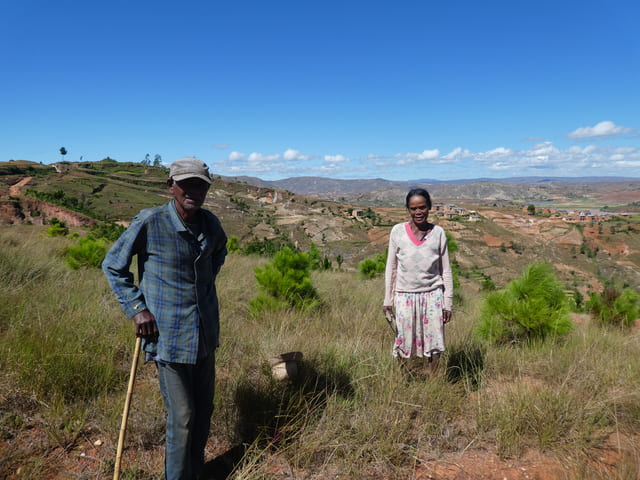
Thanks to the generosity of A Tree for You donors, the agro-ecological transition of the production systems of almost 2,840 family farms has made progress, as well as making real the desire to improve their resources through forestry (wood and fruit).
Also thanks to these actions, progress has been made in preserving the Lake Itasy watershed. Some of the fragile or degraded areas have been restored by planting over 330,000 young trees.
Twelve local nurserymen and women have been mobilised and are now better able to produce seedlings.A team of around 10 technicians, assisted by some 40 site managers (local producers), are actively implementing and monitoing this operation.
At the end of 2022, four years after the first planting operation, there were 185,155 live trees growing in the Mahavotra project. In order to continue the collaboration and render the approach sustainable, A Tree for You is supporting a new wave of planting for the this project with new beneficiaries: https://www.atreeforyou.org/en/madagascar-mahavotra-2021-agroforestry-and-forestry-on-the-watershed-near-lake-itasy/
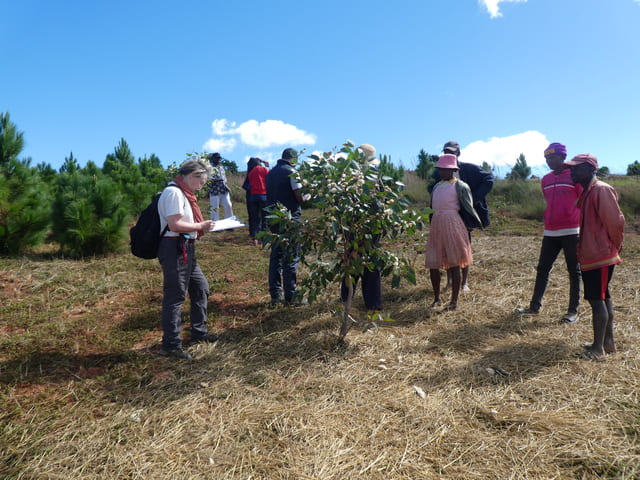
Teams from A Tree for You did a field audit in May 2023. This provided an opportunity to meet the teams in the field and see the plantations established in 2019 and 2021. An audit report will be available shortly.
